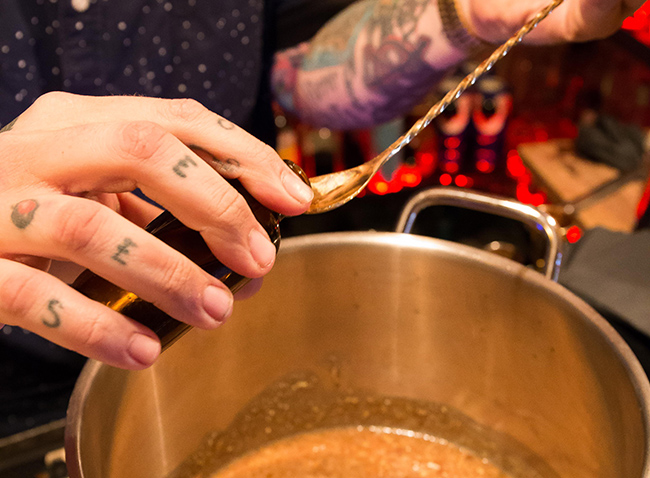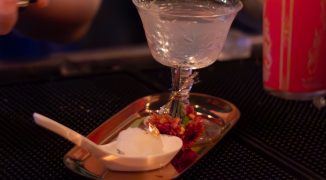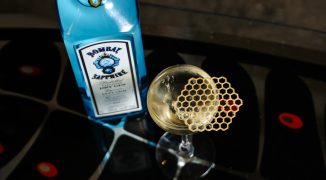In a sea of bar menus with ingredients labeled “housemade” it’s tempting to think that in-house is always better. Often, the effect is delicious and unique, other times, there is no discernible difference from a pre-made product (or it’s not quite as good). We caught up with several bartenders for their take on what you should always house-make, and which ingredients are worth it to buy.
Always house-make
Grenadine tops the list for Jeffrey Morgenthaler, author of “The Bar Book: Elements of Cocktail Technique,” and manager of two bars in Portland, Oregon. “It’s the easiest and best housemade thing you can do,” he says. “There’s just no substitute. Even the really good ones that are commercially available can’t compare to housemade, especially since in another month or two we’re going to be smack dab in the middle of pomegranate season.”
Dzu Nguyen, bar manager at Verso in San Fransisco, likes housemade grenadine because of the differences between versions at various establishments. “Maybe one person likes a little bit more clove in theirs, or a little bit more hibiscus,” he says. “We can get two different experiences in the same ingredient.”
For everyone, syrups, purees and shrubs were also in this category. But from bar to bar, it will depend on how elaborate they need to be. Shannon Mustipher, beverage director for Glady’s Caribbean in Brooklyn, NY, emphasizes how important housemade ingredients are to a Tiki program. “It’s really essential that we make our own orgreat syrup as well as any other syrups that are associated with Tiki drinks, be they passionfruit syrups or other tropical fruit compound syrups,” she says. “That has a lot to do with wanting to remain authentic to the way those drinks are traditionally made.”
Spencer Taliaferro, lead bartender at LILT Lounge in Miami, FL, likes making his own syrups, purees, and shrubs so that he can take advantage of local growing seasons. They just got through mango season in Florida, and he was making mango and mezcal infused ice cubes, mango purees, and mango shrubs. If he were relying on pre-made ingredients, that kind of seasonality would be possible, but not as authentic.
Nguyen and Taliaferro both emphasize that making these simple ingredients yourself allows you to control the consistency of your end product, ensuring that your guest gets the same cocktail every time.
Although it should go without saying, fresh juices are a must. Taliaferro recommends juicing day of, for optimal freshness. Morgenthaler pointed out that although many bars use fresh lemon and lime juice, sometimes they cut corners on juice in other ways. “I’m surprised at how many good bars use pre-squeezed pasteurized orange juice in place of doing it themselves,” he says.
Sometimes house-make
For Nguyen, it’s important to weigh the pros and cons of a lot of housemade ingredients. “It really depends on multiple factors, how big the team is, how big the cocktail list is, how big the workload is,” he says. “If you’re making all your own syrups and it’s a small team, it’s a lot of work on the entire team. You stress it where you can and then at a certain point you’re just going to have to go out and buy some stuff because it’s just become impractical. ‘Is this going to affect my service?’ is the real question.”
Morgenthaler is a fan of his housemade ginger beer, but he also doesn’t believe in housemade for its own sake. “I’m the guy who kind of champions the housemade tonic movement, but to me there’s really nothing better then Fever Tree Mediterranean tonic water.” If you can make it in-house so that it tastes better than a commercial version, he’s all for it. “ I think there’s so many commercially available options for ‘craft cocktail ingredients’ but so many of them are still not really that great.”
While everyone felt that housemade bitters are interesting, no one felt they were necessary. “I think that making bitters is a really fun project,” says Morgenthaler. “It can be a way to express your creativity, but I don’t think it’s necessary anymore. There are literally hundreds of types of bitters on the market now.” Taliaferro is quick to point out that making bitters can go wrong very easily, risking an investment of time and resources that may never make it into a drink.
Leave it to the pros
Generally, spirits and liqueurs fit into this category. “You may think that your Creme de Violette is so much better than the commercially available version from the place that’s been making it for a hundred and fifty years, but it’s definitely not,” says Morgenthaler. “Especially when you’ve made it three times. There are several versions of Creme de Violette out there, anybody that’s making it in house simply because they don’t think that the commercial version is good enough? I think that’s just hubris more than anything.”
Mustipher also feels that it’s important to question why something needs to be housemade. “I think it’s important to ask yourself if it’s actually going to make a difference in the end result of the drink over something that you can buy pre-made,” she says. “As with anything that you put in the cocktail, it should be about that and not necessarily about the cool factor or about the selling point of it all being made by hand. Sometimes you’re not going to make it better. I think it’s important to know the distinction and to ask what’s going to give you the best end result.”
Nguyen also cautions against overly precious housemade ingredients for their own sake. “Some people will say everything should be housemade, ‘it’s my product’ but in that case it’s becoming about the house instead of the cocktails themselves,” he says. “The important thing is that we’re injecting just enough interestingness but at the same time pulling back away from the spotlight, letting the cocktail and our creativity speak to the customer.”
For those interested in making more ingredients in-house, the good news is that it’s easier than ever. If you need a little help with your creativity, do some research (Taliaferro recommends “The Flavor Thesaurus” for a kickstart). But if you’re not up for more complicated ingredients, rest assured, you’re in good company.




